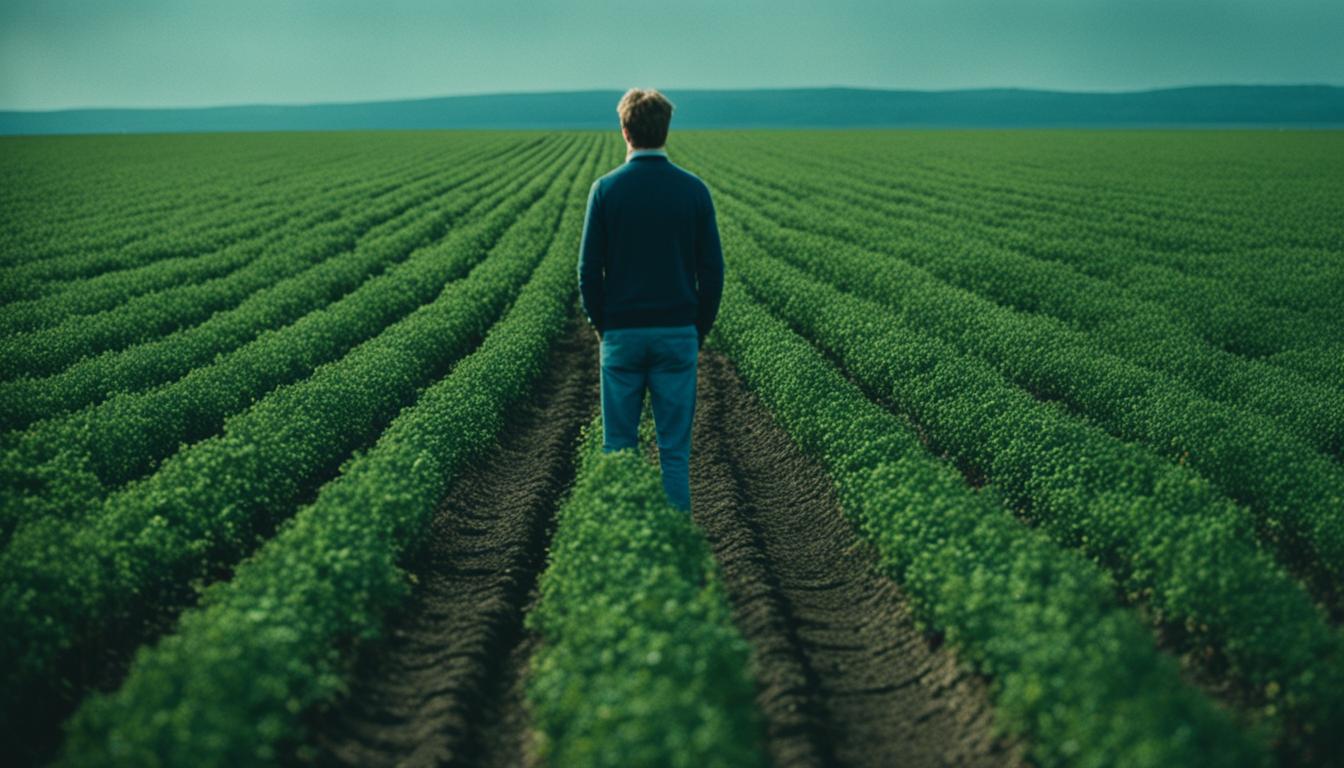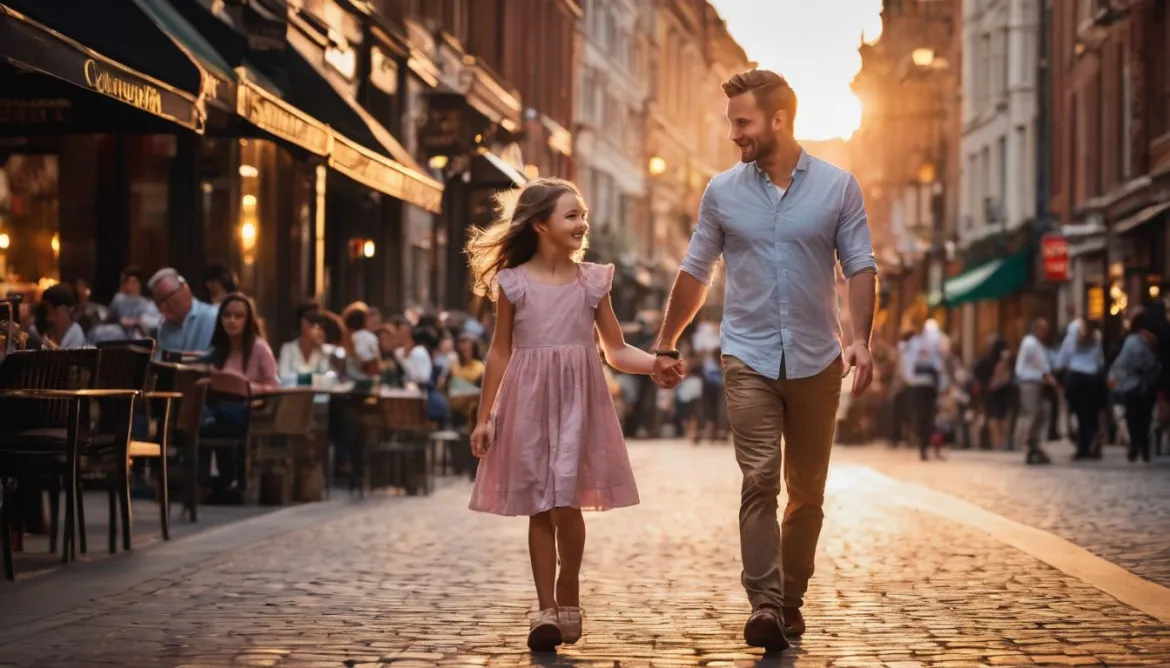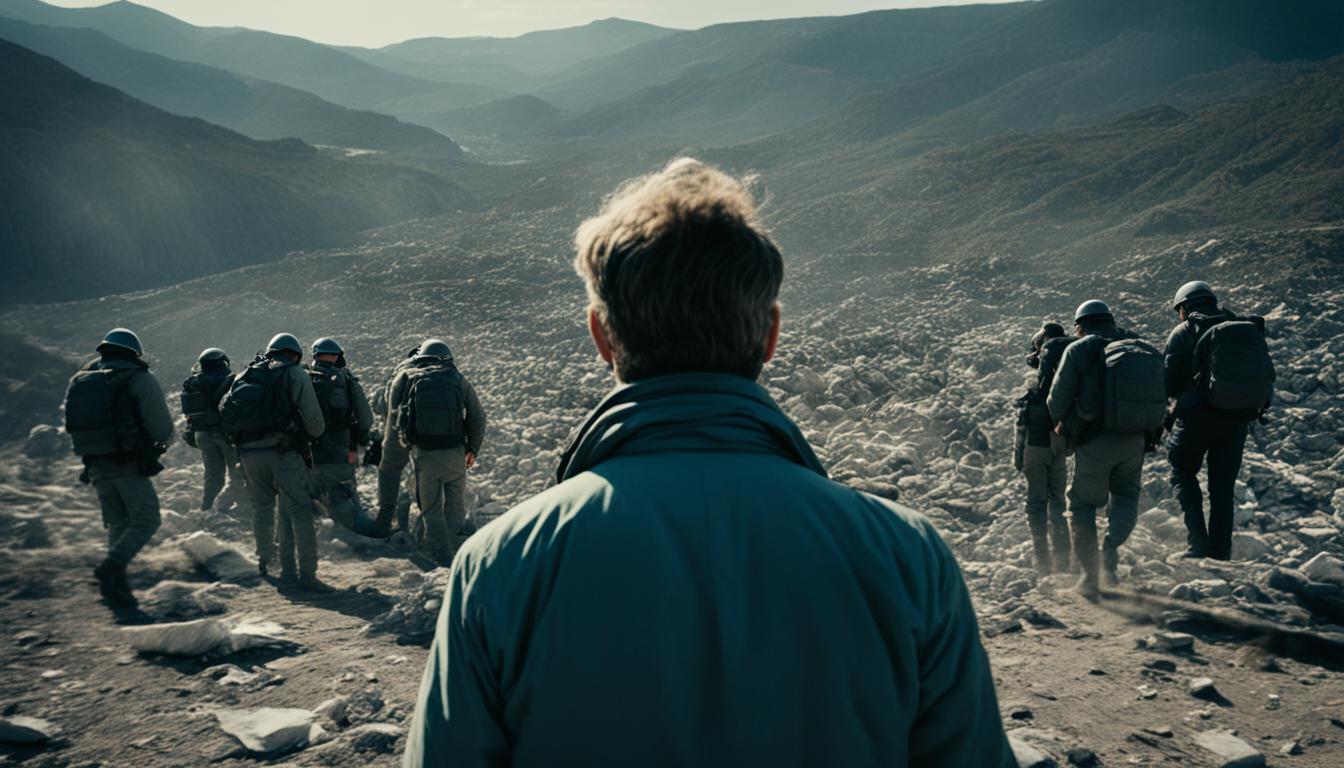In the world of documentary filmmaking, one of the key elements that sets apart a great film from an average one is the art of composition and framing. It is through the deliberate arrangement of visual elements that filmmakers can capture the attention of their audience, convey powerful messages, and create a lasting impact.
Understanding the principles of composition and framing in documentary work is essential for any aspiring filmmaker. From the Rule of Thirds to Balance and Symmetry, Leading Lines, Eye-Level Framing, Depth of Field, and Deep Space Composition, these techniques play a crucial role in visual storytelling and cinematographic aesthetics.
Key Takeaways:
- Shot composition is an art that combines visual elements to advance the story and create emotion.
- Mastering composition techniques helps engage the audience and convey the intended message.
- The Rule of Thirds, Balance and Symmetry, Leading Lines, Eye-Level Framing, Depth of Field, and Deep Space Composition are essential in documentary filmmaking.
- Composition allows filmmakers to effectively convey mood, create a strong narrative, and deliver a powerful message.
- Carefully arranging visual elements within the frame can create visually stunning and impactful films.
Understanding Shot Composition in Documentary Filmmaking
Shot composition is a crucial aspect of documentary filmmaking, as it involves arranging visual elements within the frame to effectively convey the intended message. By understanding the rules of shot composition, filmmakers can engage the audience and capture their attention throughout the documentary.
Camera framing techniques play a significant role in enhancing the visual storytelling and creating a compelling documentary. Let’s explore some key techniques that can be employed to maximize the impact of visual elements in nonfiction films:
1. Rule of Thirds
The Rule of Thirds is a fundamental principle in composition. It involves dividing the frame into nine equal squares by two horizontal and two vertical lines. By positioning key elements along these lines or at the intersections, filmmakers can create visually balanced and captivating shots.
2. Balance and Symmetry
Creating a sense of balance and symmetry within the frame can draw the audience’s attention and add visual harmony to the composition. Symmetrical framing can convey a sense of order or highlight the subject’s significance within the shot, making it visually striking.
3. Leading Lines
Leading lines are lines within the frame that guide the viewer’s eye towards a particular element or direction. By incorporating leading lines into the composition, filmmakers can create a visual flow that enhances the narrative and guides the audience’s focus.
4. Eye-Level Framing
Eye-level framing involves positioning the camera at the eye level of the characters or subjects being filmed. This technique creates a sense of connection and allows viewers to experience the story from the perspective of the characters, fostering empathy and engagement.
5. Depth of Field
Depth of field refers to the range of distance in a shot that appears in focus. By manipulating the depth of field, either by using shallow focus or deep focus, filmmakers can control what elements are in focus and create a specific visual aesthetic that enhances the storytelling.
6. Deep Space Composition
Deep space composition involves creating layers of depth within the frame by incorporating elements in the foreground, middle ground, and background. This technique adds visual depth and complexity to the shot, immersing the audience in the documentary’s world.
By employing these camera framing techniques, documentary filmmakers can effectively utilize the visual elements in nonfiction films to create a visually compelling documentary that resonates with the audience.
The Importance of Composition in Visual Storytelling
Composition plays a crucial role in visual storytelling, allowing us to effectively convey mood, create a strong narrative, and deliver a powerful message. By mastering composition techniques, such as the Rule of Thirds, Balance and Symmetry, Leading Lines, Eye-Level Framing, and Deep Space Composition, documentary filmmakers can create visually stunning and impactful films. The proper arrangement of visual elements in the frame helps to engage the audience and evoke emotional responses.
When we carefully arrange the elements within a frame, we create a visual language that communicates beyond words. Every shot is carefully constructed to elicit specific emotional responses, to guide the viewer’s attention, and to establish a connection between the audience and the story being told. Through the art of composition, we have the power to shape narratives, manipulate perceptions, and leave a lasting impression on our viewers.
Let’s explore some of the key composition techniques that can elevate visual storytelling in documentaries:
- The Rule of Thirds: This fundamental technique involves dividing the frame into nine equal sections using two horizontal and two vertical lines. By placing key elements along these lines or at their intersections, we create a balanced and visually pleasing composition.
- Balance and Symmetry: By creating a sense of equilibrium within our shots, we can draw the audience’s attention to specific elements or enhance the overall visual harmony. Symmetry can convey a sense of order and aesthetics, while balance helps to create a visually satisfying composition.
- Leading Lines: These lines guide the viewer’s eye and create a visual flow within the frame. By strategically placing elements like roads, rivers, or architectural lines, we can direct the audience’s gaze and add depth to our composition.
- Eye-Level Framing: By positioning the camera at eye level with the subjects, we can create a sense of connection and empathy. This technique allows the audience to see the world from the perspective of the characters, enhancing their engagement with the story.
- Deep Space Composition: By including foreground, middle ground, and background elements in our composition, we can achieve a sense of depth and dimension. This technique adds visual interest and creates a layered visual narrative.
By incorporating these composition techniques into our visual storytelling, we can captivate our audience and enhance the impact of our documentaries. Let’s take a closer look at how these techniques are applied in real-world examples:
“Composition is the strongest way of seeing.” – Edward Weston
Examples of Composition Techniques in Documentaries
| Documentary | Composition Technique |
|---|---|
| The Cove | Rule of Thirds |
| Man on Wire | Balance and Symmetry |
| Helvetica | Leading Lines |
| Grizzly Man | Eye-Level Framing |
| Samsara | Deep Space Composition |
These examples demonstrate the effective use of composition techniques in visual storytelling. By studying and understanding how composition is employed in successful documentaries, we can develop our own unique visual style and create captivating films.
In summary, mastering composition in visual storytelling is essential for creating impactful and engaging documentaries. By utilizing composition techniques such as the Rule of Thirds, Balance and Symmetry, Leading Lines, Eye-Level Framing, and Deep Space Composition, we can create visually stunning films that resonate with our audience. The proper arrangement of visual elements within the frame allows us to evoke emotions, convey narratives, and deliver our message effectively.
Applying the Rule of Thirds in Documentary Filmmaking
When it comes to composition in documentary filmmaking, one of the fundamental rules to master is the Rule of Thirds. This rule involves dividing the frame into three equal vertical and horizontal sections, resulting in a grid of nine equal squares.
By positioning key elements on the intersecting lines or within the squares created by the Rule of Thirds, filmmakers can create visually pleasing and balanced shots. This technique helps guide the viewer’s eye and create a sense of depth in the composition.
Using the Rule of Thirds in documentary filmmaking enhances the overall visual storytelling and captures the audience’s attention. It ensures that the important elements in the frame are strategically placed, drawing the viewer’s focus and adding visual interest to the scene.
Whether it’s positioning the protagonist’s eyes on one of the intersecting lines for added impact or aligning the horizon along one of the horizontal lines to create a balanced landscape shot, the Rule of Thirds can elevate the composition and strengthen the storytelling in a documentary.
Benefits of Using the Rule of Thirds:
- Creates a visually balanced and aesthetically pleasing composition
- Guides the viewer’s eye and emphasizes key elements in the frame
- Provides a sense of depth and visual interest in the shot
- Enhances storytelling by strategically positioning important elements
The Rule of Thirds is a powerful tool that helps us create compelling compositions in documentary filmmaking. By dividing the frame into thirds and placing our subject on these intersecting lines, we can grab the viewer’s attention and create visually striking shots. It’s a simple but effective technique that can truly elevate our storytelling.
By incorporating the Rule of Thirds into our documentary composition, we can enhance the visual storytelling and create a stronger connection with the audience. This rule, along with other composition techniques, forms the foundation for captivating and engaging documentary filmmaking.
Now that we’ve explored the Rule of Thirds, let’s dive deeper into the world of composition and framing in documentary filmmaking, discovering more techniques that can take our visual storytelling to new heights.

Using Balance, Symmetry, and Leading Lines in Documentary Composition
When it comes to documentary filmmaking, composition techniques play a vital role in creating visually stunning and impactful films. Among these techniques, balance, symmetry, and leading lines are key elements that can enhance the overall storytelling and add depth to the visual composition.
Balance: Creating a sense of visual equilibrium is crucial in drawing the audience’s attention to key elements within the frame. By balancing the placement of different visual elements, filmmakers can create a harmonious composition that engages viewers and conveys the intended message effectively.
Symmetry: Symmetrical framing can be used to convey a sense of order or to highlight the subject’s importance within the frame. By utilizing symmetrical compositions, filmmakers can evoke a sense of balance and stability, while also emphasizing the subject’s significance in the documentary.
Leading lines: Leading lines are powerful visual cues that guide the viewer’s eye through the composition. By strategically placing lines or shapes that naturally lead towards the subject, documentary filmmakers can create a visual flow that enhances the storytelling experience and ensures that the audience’s focus is directed precisely where it needs to be.
When using balance, symmetry, and leading lines in documentary composition, we can create a visually pleasing and engaging experience for the audience. These composition techniques not only make the film aesthetically appealing but also contribute to the overall narrative by directing attention and adding depth to the visual elements.
By incorporating balance, symmetry, and leading lines into documentary composition, filmmakers can elevate the visual storytelling and create a lasting impact on the audience. These techniques, along with other composition principles, such as the Rule of Thirds and Eye-Level Framing, provide a solid foundation for capturing captivating visuals that effectively convey the intended message of the documentary.
Next, we’ll explore the significance of eye-level framing and depth of field in documentary filmmaking, two more composition techniques that play a crucial role in creating a powerful visual narrative.
Eye-Level Framing and Depth of Field in Documentary Filmmaking
In documentary filmmaking, eye-level framing and depth of field are essential composition techniques that contribute to the overall storytelling and enhance the impact of the documentary. These techniques, when used effectively, immerse the audience in the perspective of the characters and guide their attention to specific elements within the frame.
Eye-Level Framing:
Eye-level framing is a powerful technique that brings the audience closer to the characters and creates a sense of connection. By positioning the camera at the same height as the characters’ eyes, filmmakers can elicit empathy and immerse the viewers in the documentary. This technique allows the audience to experience events from the characters’ point of view, enhancing their understanding and emotional engagement with the story. Eye-level framing is particularly effective in capturing intimate moments and personal interactions, making the documentary more relatable and impactful.
Depth of Field:
Depth of field is another important element in composition that allows filmmakers to control focus within the frame. By adjusting the depth of field, filmmakers can direct the viewer’s attention to specific subjects or elements while creating a distinctive visual aesthetic. Shallow depth of field, achieved by using a wide aperture, creates a pronounced separation between the subject and the background, emphasizing the subject’s importance. On the other hand, deep depth of field, achieved by using a narrow aperture, maintains focus throughout the frame, capturing detail and context. The choice of depth of field depends on the desired effect and the story being told, allowing filmmakers to convey emotions, highlight key details, and establish a visual hierarchy.
Combining eye-level framing and depth of field in documentary filmmaking creates a powerful visual language that enhances the storytelling experience. By employing these composition techniques strategically, filmmakers can engage the audience on an emotional level and guide their perception of the documentary’s narrative. The application of eye-level framing and depth of field adds depth, authenticity, and a heightened sense of immersion to the documentary, resulting in a captivating and resonating viewing experience.

Examples of Eye-Level Framing and Depth of Field in Documentary Filmmaking:
“In the documentary ‘March of the Penguins,’ the filmmakers utilized eye-level framing to transport viewers into the harsh Antarctic environment from the perspective of the penguins. By positioning the camera at eye level, the audience experienced the treacherous journey of the penguins firsthand, creating a deeply emotional connection with these creatures.”
“In the documentary ‘Jiro Dreams of Sushi,’ the filmmakers cleverly used shallow depth of field to emphasize the exquisite details of the sushi being prepared. By selectively focusing on the delicate ingredients and the meticulous techniques of Master Sushi Chef Jiro, audiences were fully immersed in the world of sushi-making, appreciating its artistry and dedication.”
Conclusion
Mastering composition and framing in documentary work is essential for creating impactful and engaging films. As filmmakers, we must understand and apply the rules of shot composition, such as the Rule of Thirds, Balance and Symmetry, Leading Lines, Eye-Level Framing, Depth of Field, and Deep Space Composition. By utilizing these visual storytelling techniques and cinematography principles, we can effectively convey our message, evoke emotions, and capture the audience’s attention.
The composition of a documentary plays a significant role in its success. It allows us to guide the viewer’s eye, create a strong narrative, and deliver a powerful message. Whether it’s using the Rule of Thirds to create visually pleasing shots, employing balance and symmetry to create a sense of order, or utilizing leading lines to guide the viewer’s eye, composition enhances the overall storytelling and adds depth to the visual elements.
By mastering composition and framing in our documentary filmmaking strategies, we can create visually stunning and impactful films. The proper arrangement of visual elements, combined with the use of eye-level framing and depth of field, can evoke empathy from the audience and immerse them in our stories. These techniques allow us to effectively convey our message and leave a lasting impression on viewers.
FAQ
What is shot composition in documentary filmmaking?
Shot composition in documentary filmmaking involves arranging visual elements within the frame to effectively convey the intended message and engage the audience.
What are some important composition techniques in documentary filmmaking?
Some important composition techniques in documentary filmmaking include the Rule of Thirds, Balance and Symmetry, Leading Lines, Eye-Level Framing, Depth of Field, and Deep Space Composition.
How does the Rule of Thirds enhance documentary composition?
The Rule of Thirds divides the frame into three equal vertical and horizontal sections, creating a grid of nine squares. By positioning key elements on the intersecting lines or within the squares, filmmakers can create visually pleasing and balanced shots.
How do balance, symmetry, and leading lines contribute to documentary composition?
Balance, symmetry, and leading lines help create a sense of visual equilibrium, draw attention to key elements, and create a harmonious composition. Symmetrical framing can convey order or highlight a subject’s importance, while leading lines guide the viewer’s eye and create a visual flow.
What is the significance of eye-level framing and depth of field in documentary filmmaking?
Eye-level framing brings the audience into the perspective of the characters and creates a sense of connection, while depth of field allows filmmakers to control what is in focus and direct the viewer’s attention. Both techniques contribute to the overall storytelling and visual aesthetic of the documentary.
Why is mastering composition and framing important in documentary filmmaking?
Mastering composition and framing in documentary work is crucial for creating impactful and engaging films. These techniques help convey the intended message, evoke emotions, and capture the audience’s attention.




